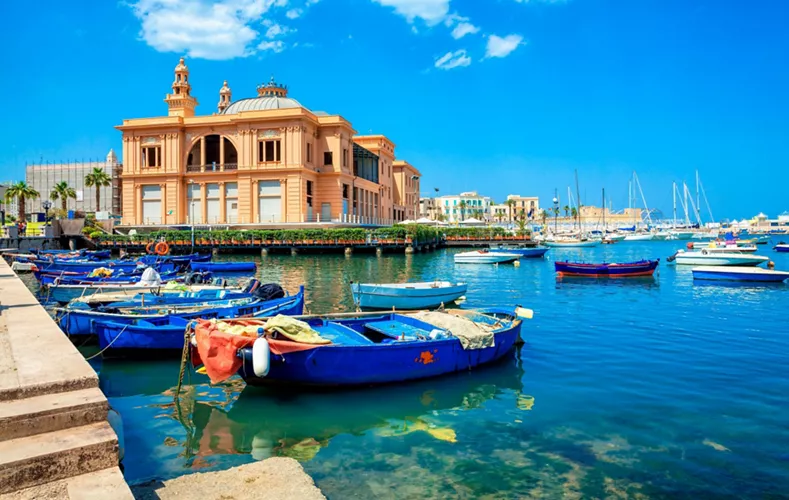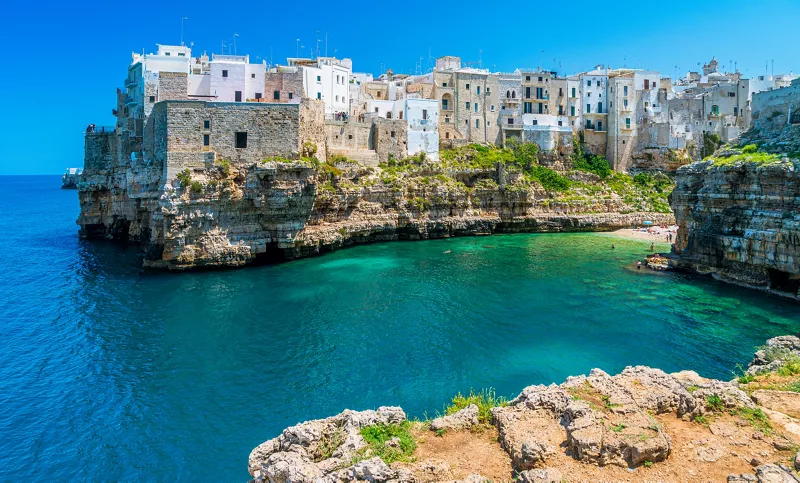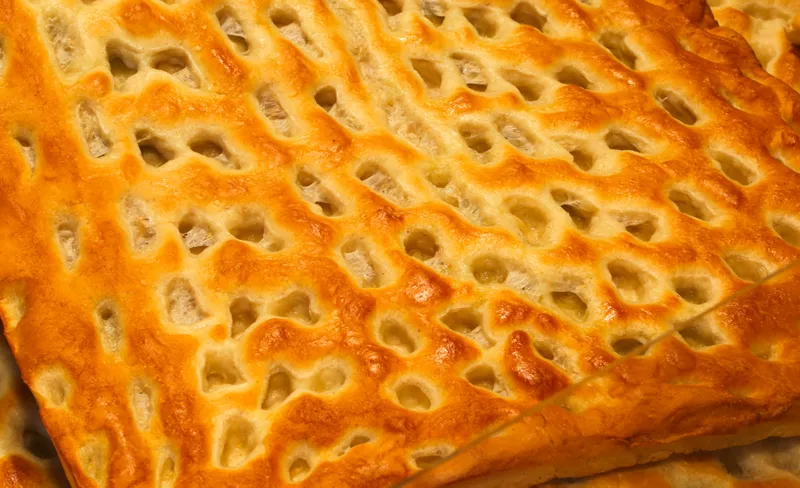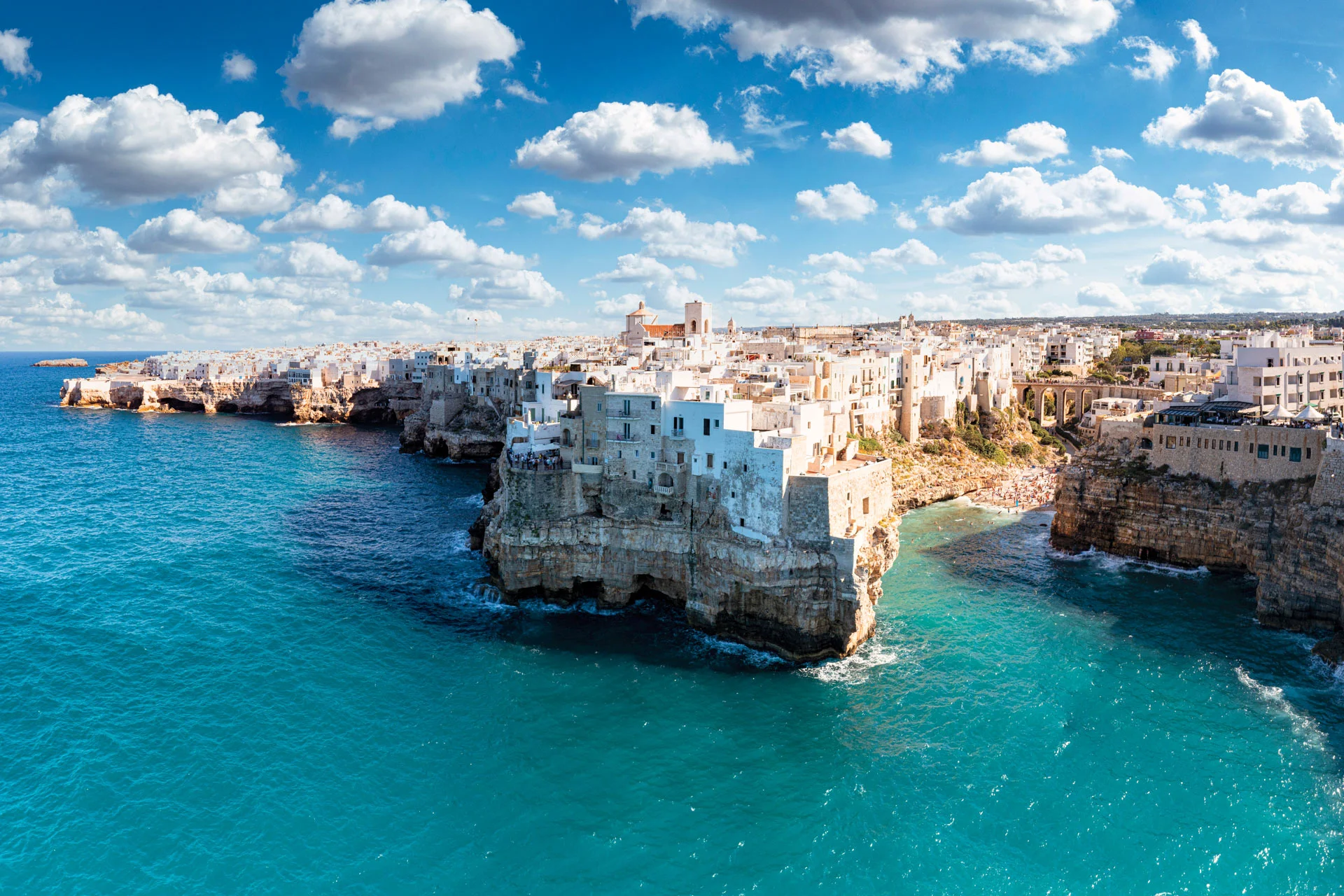Apulia: the sunny region between two seas and warm hospitality in places rich in history
Apulia is a jigsaw puzzle of wonders ranging from the Gargano to the Salento for over 930 kilometers of breathtaking coastline.
Wild nature and a blue sea invite you to dive into the water here, but excursions to trulli, masserias, and historic villages should not be neglected.
Warm, reserved hospitality and mouth-watering cuisine make a holiday in Apulia truly memorable
1. Origins and history of Apulia

The historical name Apulia originates from the ancient population of the Apuli who inhabited part of the region in pre-Roman times.
The first fossil remains of man date back 25,000 years and was found near Altamura. Here, there are numerous finds from prehistoric times, including menhirs and dolmens. On top of that, Grotta Paglicci is one of the most important Palaeolithic sites in Europe, and the graffiti in Grotta Romanelli is extraordinary.
The Roman conquest was followed by centuries of raids by the Saracens, who conquered Taranto and Bari.
The period of greatest splendor in Apulia dates back to the reign of the House of Swabians thanks to the figure of Frederick II of Swabia who was King of Sicily, Duke of Swabia, King of the Romans, and later Emperor of the Holy Roman Empire, as well as King of Jerusalem. Called “Stupor Mundi” and “Puer Apuliae”, he was beloved for his strong personality.
2. The main cities of Apulia

The journey of discovery of Apulia starts from Bari, it’s capital. The old town, known as “Bari Vecchia”, is a maze of narrow streets where folklore and tradition have a unique liveliness.
This is where the Basilica of St Nicholas stands, one of the favorite centers of the Orthodox Church in the West and a spectacular example of Apulian Romanesque architecture. Not far away, you can visit the Swabian Castle of Bari, the city’s landmark building, an imposing fortress that is now a museum.
Lecce is no less great, the city of the famous and sumptuous Baroque and stone embroidery, a fundamental cultural center of the Salento, known as “the Florence of the south”.
An icon of the region is Alberobello, a popular tourist destination thanks to its famous trulli, ancient cone-shaped dwellings dating back to the 17th century, now protected by Unesco. The beating heart of the Valle d’Itria, also known as the Valley of the Trulli, stretches between the provinces of Bari, Brindisi, and Taranto and is dotted with charming whitewashed villages with a fairytale atmosphere where you can lose yourself in beauty.
Called the “White City” for the lime-covered houses that characterize the town center, Ostuni offers a stunning view of the hill where it lies. Several times awarded for its beaches, it offers an enchanting sea.
3. What to see in Apulia 6 unmissable sites

Among the stops to experience an authentic and wonderful Apulia, four stand out, starting with the entire Salento area in southern Apulia, bathed by the Ionian and Adriatic Seas and known for its beaches, among the most beautiful in Italy.
It boasts a coastline with some high, rocky stretches, but mostly fine sand.
The area is characterized by olive trees, dry-stone walls, baroque towns, masserias, and thousand-year-old villages. Popular locations include Gallipoli, Otranto, Lecce, and Santa Maria di Leuca.
Also worth a visit are the Tremiti Islands located off the coast of Gargano and considered treasures of the Adriatic Sea with crystal-clear waters, sheer cliffs, and unspoiled nature.
There are five islands: San Domino, San Nicola, Capraia, Cretaccio, and Pianosa.
The whole Gargano with its pearls such as Vieste is worthy of a holiday: crystalline waters, a rich culinary tradition, lots of fun, and unspoiled nature.
The Gargano National Park covers an area of over 120,000 hectares and includes ancient forests and archipelagos bathed by crystal-clear water. In the innermost part, we find the nature reserve Umbra Forest which owes its name to the dense vegetation that makes it very shady for many stretches.
Castel del Monte is a must-see: it is located in Andria and has peculiar architecture, linked to mysterious stories about the ancient order of the Knights Templar.
Among the most popular attractions in Puglia are the Grotte di Castellana, a complex of underground cavities of karstic origin that is one of the most spectacular in Italy, and the Baia dei Turchi, the beach a few kilometers from Otranto.
Tradition has it that Turkish warriors landed here for the 15th-century siege of Otranto.
4. Unusual places of Apulia: 3 stops for the most curious ones

Among the unusual places in Apulia, Pulo di Altamura is a curious chasm that reaches a depth of 92 meters. Furrowed by vertical walls full of caves inhabited throughout history, it is a natural amphitheater.
Also spectacular is Saline di Margherita di Savoia, a nature reserve containing two of Europe’s largest salt pans.
Finally, the Abbey of San Vito in Polignano a Mare, the main attraction of the town, is definitely worth a stop. The church, of the Benedictine foundation, dates back to the 10th century.
5. Typical products of Apulia 5 delicacies to taste

Apulian cuisine is a concentrate of unique flavors and typical products, starting with the Bari focaccia, high and crispy, topped with fresh tomatoes and Baresan olives.
Pasta is a main ingredient in traditional recipes, including orecchiette, rough and concave, and cavatelli, small elongated and hollow gnocchi.
Also symbolic of the area are the taralli pugliesi both sweet and savory and ring-shaped, delicious to munch at any time of day, and the bread from Altamura, created with sourdough, water, sea salt, and re-milled durum wheat semolina grown in the area.
6. Events in Apulia: an opportunity not to be missed

The Carnival of Putignano is the longest event in Europe because it starts on December 26th and ends on Shrove Tuesday, February 21st. It is among the oldest and longest-lived in the world.
The specificity of the Event is rooted in the origins of the Carnival which, in addition to the parade of majestic themed papier-mâché floats, is expressed through a series of rites, traditions, and symbols of the territory’s identity. In this sense, the Carnival of Putignano has become, over the years, a known brand and appreciated throughout Italy and abroad, simultaneously opening up to change and collaborations with other Italian and foreign carnivals.
Among the events that enliven Apulia is the Sagra della Pittula in Surano a Christmas market where you can taste pittule, small balls of leavened dough, fried in hot oil.

